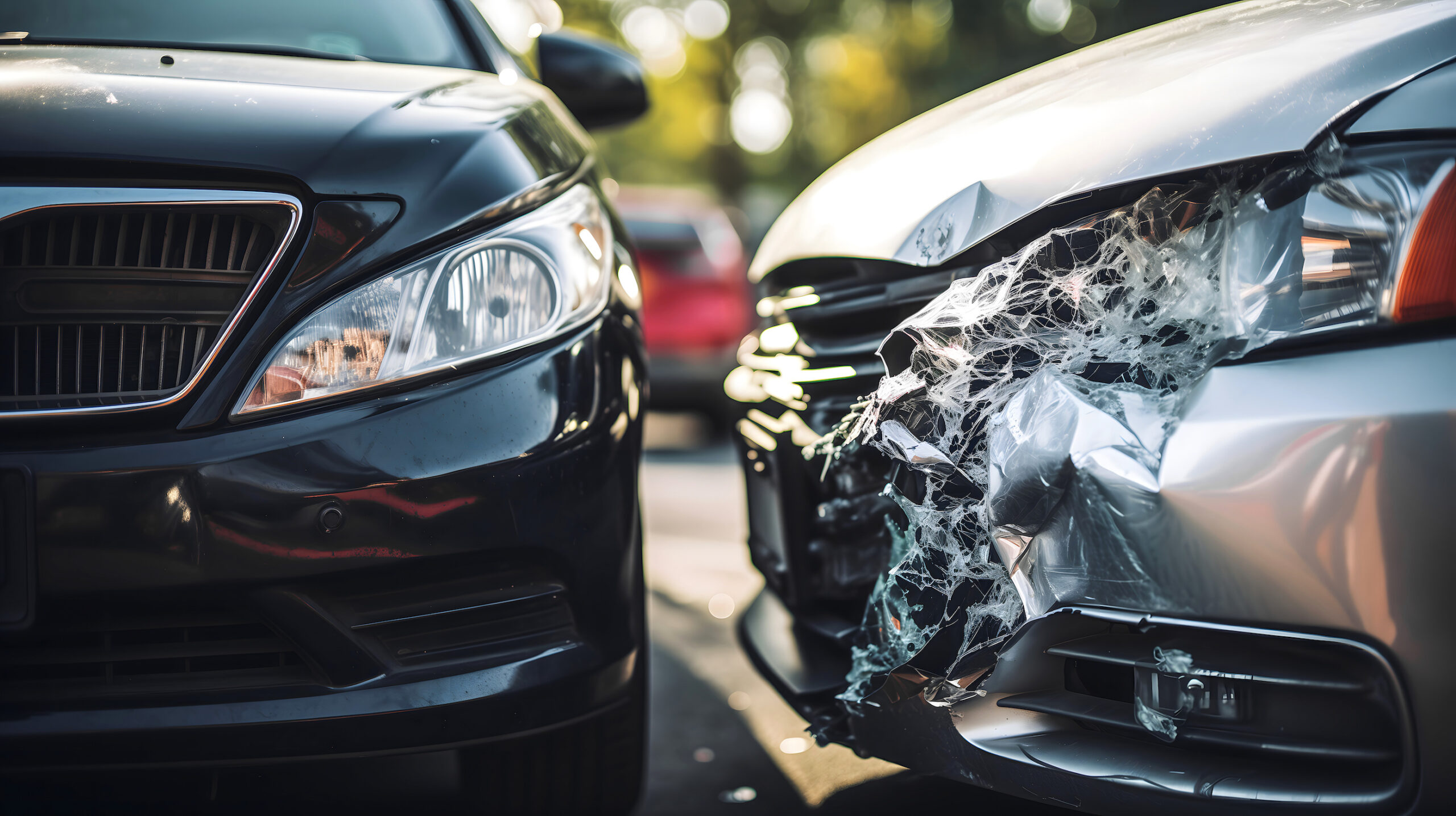The physics of a car collision encompasses more than just the shattering glass and crunching metal that meets the eye during these harrowing moments. At its core, it’s a complex interplay of forces, energy transfer, and momentum—all governed by fundamental laws of physics. Understanding these principles not only sheds light on why accidents happen in the way they do but also highlights the critical importance of vehicular safety features and responsible driving behaviors.
Table of Contents
- Understanding the Basics of Physics Involved in a Car Collision
- The Role of Momentum and Energy Transfer During an Impact
- How Speed Affects the Severity of a Collision
- Analyzing Different Types of Collisions: Head-on, Rear-end, and Side-impact
- The Importance of Safety Features in Cars to Mitigate Injury
- Legal Implications of Car Collisions: A Perspective from Silver Injury Law
Understanding the Basics of Physics Involved in a Car Collision
Understanding the basics of physics involved in a car collision is crucial for comprehending the dynamics at play during these sudden and often catastrophic events. At its most fundamental level, every car collision involves two main physical concepts: force and motion. Newton’s laws of motion serve as the cornerstone for analyzing how vehicles behave before, during, and after impact.
The first law, known as inertia, explains why vehicles continue moving until acted upon by an external force—like another vehicle or obstacle. The second law relates to how the acceleration of a vehicle is dependent upon both the mass of the vehicle and the amount of force applied to it. Lastly, Newton’s third law—the principle that every action has an equal and opposite reaction—illuminates why occupants inside a vehicle feel jolted in response to collisions.
Through these principles, we can begin to unravel how various factors such as speed and weight distribution among the cars involved influence the overall outcome of the incident.
The Role of Momentum and Energy Transfer During an Impact
The role of momentum and energy transfer during an impact is pivotal in determining the outcome of a car collision. Momentum, a measure of mass in motion, is conserved in collisions under the laws of physics. This means that when two vehicles collide, their combined momentum before impact equals their combined momentum after impact unless external forces act upon them. On the other hand, energy transfer plays out through kinetic energy—the energy possessed by an object in motion—which is partially absorbed by vehicle bodies and safety features like airbags and crumple zones but also transferred to occupants as forceful jolts.
In more technical terms, during a collision, some kinetic energy converts into various forms such as sound (the crash noise), heat (friction-generated heat), or even potential mechanical energy (deformation of objects). The severity and distribution of this energy transfer significantly affect both vehicular damage and occupant injury levels. Understanding these concepts helps dissect how impacts dissipate through vehicles’ structures—shedding light on why certain angles or speeds result in varying degrees of destruction and trauma.
How Speed Affects the Severity of a Collision
How speed affects the severity of a collision is a critical aspect of the physics involved in car accidents. Essentially, the faster a vehicle is moving, the more kinetic energy it possesses; this energy exponentially increases as speed goes up, following the formula for kinetic energy ((KE = \frac{1}{2}mv^2)), where (m) represents mass and (v) velocity. Therefore, even small increments in speed can lead to significantly higher levels of kinetic energy that need to be dissipated during an impact.
This relationship between speed and collision severity underpins why high-speed crashes often result in extensive vehicular damage and severe injuries or fatalities. At higher velocities, both vehicles have less time to react and slow down before collision, resulting in greater force upon impact. Additionally, safety features like airbags and seatbelts are less effective at extremely high speeds due to the sheer amount of force they must counteract.
Understanding this dynamic highlights how crucial obeying speed limits and driving conditions is for reducing accident impacts’ potential harm.
Analyzing Different Types of Collisions: Head-on, Rear-end, and Side-impact
Analyzing different types of collisions—head-on, rear-end, and side-impact—reveals how the physics involved varies with each scenario, influencing both the damage inflicted on vehicles and injuries sustained by occupants.
- Head-on Collisions: These are often considered the most dangerous due to the direct opposition of forces. When two vehicles collide front-to-front, their speeds effectively add up if they’re moving toward each other, resulting in a high-energy impact that significantly increases injury risk.
- Rear-end Collisions: Typically occurring when one vehicle strikes another from behind, these are common at stop lights or in traffic jams. The main force is directed forwards for the struck vehicle and backwards for the striking vehicle. Occupants may suffer whiplash due to rapid acceleration and then deceleration.
- Side-impact Collisions: Also known as T-bone accidents, occur when one vehicle’s front collides with another’s side. This type can be particularly hazardous because cars have less structure on their sides to absorb energy and protect passengers than they do at the front or back.
Each collision type presents unique challenges in terms of vehicular damage control and occupant protection; thus understanding these dynamics is crucial for enhancing safety measures tailored specifically against various accident scenarios.
The Importance of Safety Features in Cars to Mitigate Injury
The importance of safety features in cars to mitigate injury during collisions cannot be overstated. Modern vehicles are equipped with a range of technologies designed to absorb and redirect the forces experienced during an accident, protecting occupants from the worst impacts. Crumple zones, for instance, are engineered areas at the front and rear of a vehicle that deform in a controlled manner upon impact, absorbing some of the collision’s energy before it reaches passengers.
Airbags complement crumple zones by providing cushioning for occupants against abrupt stops or collisions; they deploy based on signals from sensors detecting significant deceleration. Seat belts play a crucial role too, restraining passengers within their seats to prevent or reduce contact with interior car components or ejection from the vehicle.
Moreover, advanced driver-assistance systems (ADAS) like automatic emergency braking (AEB) and electronic stability control (ESC) can preemptively take action to avoid accidents altogether or lessen their severity by adjusting vehicle dynamics in critical moments.
Together these safety features represent vital elements in modern automotive design focused on safeguarding human life amidst unavoidable physics and realities governing car collisions. Their continued development and refinement remain paramount as we strive towards safer roads for everyone.
Legal Implications of Car Collisions: A Perspective from Silver Injury Law
Legal implications of car collisions are a critical aspect that we at Silver Injury Law in South Florida navigate with expertise and compassion. When accidents occur due to negligence—be it speeding, driving under the influence, or failure to adhere to traffic laws—the consequences extend beyond physical injuries and property damage; they enter the realm of legal accountability.
Victims of such incidents have rights that need protection. This includes compensation for medical expenses, lost wages due to inability to work, pain and suffering, and other damages resulting from the collision. Establishing liability often hinges on understanding the physics behind these accidents—how forces were applied and what could reasonably have been done by each party involved to prevent them.
At Silver Injury Law we leverage this scientific insight alongside thorough legal knowledge, ensuring clients receive fair representation during insurance negotiations or courtroom proceedings if necessary. Our commitment is not just about navigating today’s challenges but also securing clients’ futures post-collision.




